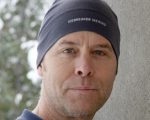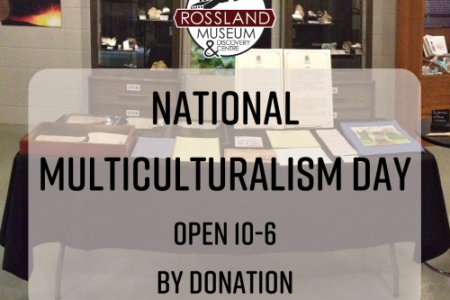TALES AND LEGENDS OF THE MOUNTAIN KINGDOM: How the Schofield Highway Got Its Name
What do Trail, Rossland, and Warfield have in common? Well, lots actually. But what geographically connects them to one another? Back in the day, it was a railway line built by Fritz Augustus Heinze. The village of Warfield was named for Fritz’s secretary, Carlo Warfield, and at one time it served as the midpoint of the trip between Rossland and Trail. The village, in fact, had a train station before it had a fertilizer plant. Eventually, the railway was replaced by a steep, winding, and rather treacherous road that was built in the 1930s.
This stretch of highway was somewhat of an engineering feat with its hairpin curves and 10% grades. It still isn’t fun to navigate in the snow, so I can only imagine how much less fun it was to navigate in the days before four wheel drives, decent snow tires, and questionably decent snow removal.
There are various names for the highway, many of them local nicknames that we who live in the two cities freely use. Though it’s officially part of highway 3B, we refer to it as the Trail Hill if we live in Rossland, the Rossland Hill if we live in Trail, or sometimes we just call it, The Hill. Whatever the moniker, everyone knows it, everyone’s been on it, and everyone has feelings about it. But what you might not know about The Hill is that it has another name, one that isn’t used quite so generally known unless you’re address lies upon it or you are in the real estate business. That name is the Schofield Highway.
Not as ominous-sounding as The Hill, the Schofield Highway has a bit of a history that I’ve managed to piece together from disparate sources, originating with a reference to the road’s namesake, J.H. Schofield, in Elsie Turnbull’s book, Trail Between Two Wars.
J.H. was born in Brockville, Ontario, on February 19, 1866 as James Hargrave Alcock Schofield, and was educated in nearby Port Hope. It’s likely he showed up in Trail around the time The Silver City was booming (along with its sibling, The Golden City), with its new smelter burning at full force. I found in one source that Schofield was a lumberman in the area, and as such I presume he’d have had a decent business going on as the town was constantly growing.
He must have had a good reputation around town because in 1902 he became the mayor of Trail, and stayed mayor for five years, until 1907. At that point, sources begin to tell us a few more things about him, because in 1907, he became a much more important person in the area. He ran in the Ymir riding (yes, Ymir used to have its own riding!) for the provincial Conservatives and won the seat with a total of 325 votes, but he did not win the popular vote. Two years later there was another provincial election, where he won 65% of the popular vote, and three years later, in the provincial election of 1912, we won a landslide of nearly 80% of the popular vote.
He held the Ymir seat until 1916, when I suspect the electoral boundaries were redrawn, because it was in that year that he ran for the MLA seat for the riding of Trail–a position he held until 1924. Again, for the election of 1924, electoral boundaries changed, and the new riding of Rossland-Trail was born (Rossland had its own riding previous to the change). Schofield was our MLA until 1933.
That’s a lot of time in public office, if you count his mayoralty, and even if you don’t that’s still a long time – 26 years!
Local infrastructure is one of Schofield’s legacies. The Hill, for one, was constructed in 1932, and featured a railway tunnel in Annable (which is named after one of Warfield’s pioneering families, Mac and Bertie Annable, who ran a 5000 acre cattle ranch, a sawmill, and a flume) that was nearly the centre of a potentially disastrous bomb plot in 1952. A couple of boys were walking along the tracks and found a homemade explosive device that consisted of 30 sticks of dynamite and a detonator all wrapped up in a cardboard beer box. They took it home with them, their parents called the police and–voila–bomb plot foiled.
The highway, incidentally, was re-routed in the 1960s and the tunnel was abandoned in favour of a railway bridge over the new route.
I found a reference to Schofield in a collection of obituaries from Trail newspapers in an obituary for a man presumed drowned in 1913. Apparently, he used his clout to organize road gangs into a search party for one Frank Fincham of Rossland, who worked at the Rossland sub-station of the West Kootenay Power and Light Company. Fincham, 35, went missing on a fishing expedition along the Blueberry Creek and was never found despite everyone’s efforts.
Schofield was also the Grand Master of the Trail lodge of the Freemasons from 1906 to 1907.
Just a couple of months short of his 73rd birthday, Schofield passed away on December 9, 1938. He was buried in Trail on December 12, 1938.
And that is the background of The Hill, and its namesake, from what I can glean. Though this is a little more Trail-centric than what I normally write in this column, it still gives an indication of the ties that bind us with our neighbours down the mountain from us, and is a nifty little piece of our own history as well. After all, where would we be without The Hill?
Sources:
Trail Between Two Wars: The Story of a Smelter City, Elsie G. Turnbull
http://www.memorybc.ca/james-h-schofield-fonds;rad
http://en.wikipedia.org/wiki/James_Hargrave_Schofield
http://en.wikipedia.org/wiki/Kootenay_West_(provincial_electoral_district)
http://www.realhistory.ca/canadian/obit-4/#more-971
http://www.crowsnest-highway.ca/cgi-bin/citypage.pl?city=warfield
http://freemasonry.bcy.ca/history/bc_history.html

























